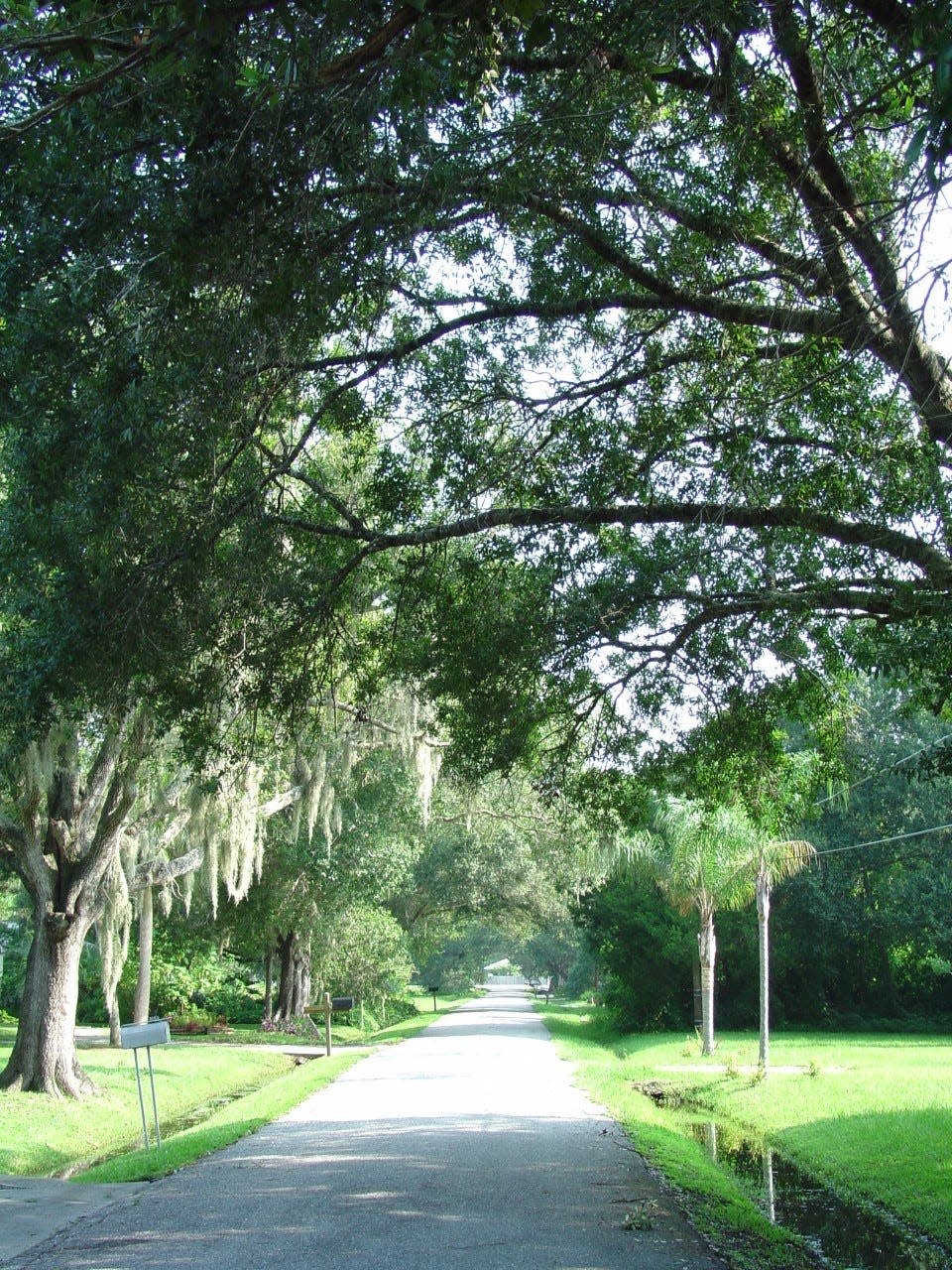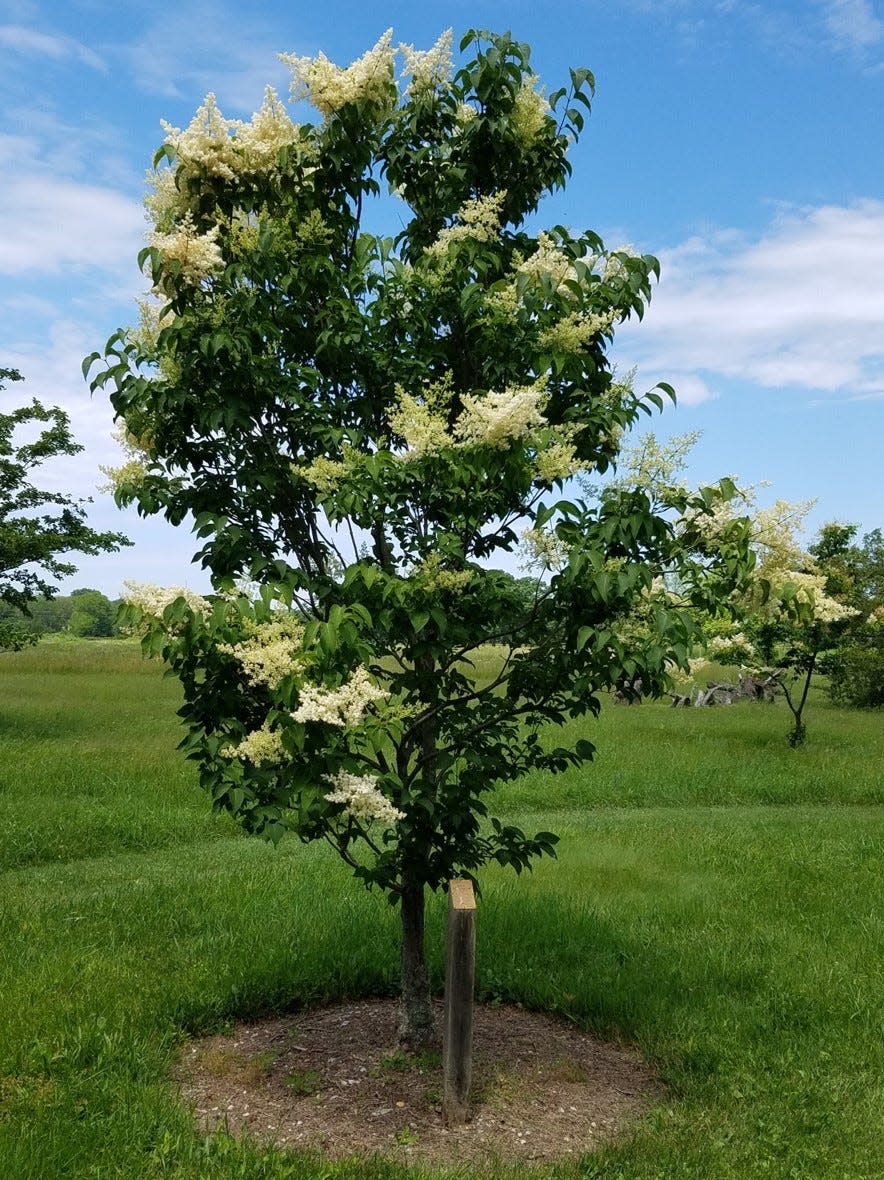Our backyard is home to a family tree of love, second chances and the importance of nature
Earlier this month, our friend Bob, landscaper extraordinaire, planted another tree in our backyard, to honor the birth of our eighth grandchild. This might have to be the last, he warned.
“You’re running out of room, Connie. The next grandchild will have to be a bush.”
Blasphemy.
Imagine a child standing under a canopy of trees as Grandma points to the single hydrangea and says, “No, no, you’re just as important as the other grandchildren. See? There’s your bush.”
When we moved here in 2013, our backyard had no trees inside the fence. We thought planting a tree would be a nice tradition for our grandchildren, but there were other incentives. We live in a diverse, urban neighborhood committed to growth in multiple directions, including the planting of trees. A worthwhile endeavor, and an infectious one, too.
Finding safety, food, friends in branches
Ours is the largest development built in the city of Cleveland since World War II. After construction, a few older trees remained, but most of the trees lining streets and steadily expanding in yards were planted in the last two decades. A tree commission has continued this tradition by planting more trees in common areas.

Trees are beautiful, and they work hard, too, which I didn’t fully appreciate until I read Jill Jonnes' 2016 book, “Urban Forests: A Natural History of Trees and People in the Cityscape.”
“Despite their ubiquity and familiarity, most of us – typical cosmopolites – take them for granted and know little of their specific natural history or many civic virtues,” Jonnes writes. “And yet trees, nature’s largest and longest-living creations, play an extraordinarily important role in our cityscapes. They are not only critical to public and individual health but are also the dominant component of what is now called green infrastructure, defining space, mitigating storm water, cooling the air, soothing our psyches, and connecting us to nature and our past.”
Some of my earliest friends were trees. My childhood home was on a busy stretch of U.S. Route 20, but the mighty oaks in the front yard absorbed noise, shaded our eyes and cooled our busy bodies on the hottest days. A large apple tree in the backyard was our jungle gym in the summer and the source for countless pies in the fall.
A cherry tree behind the shed was my co-conspirator, offering refuge from my oldest-sibling duties. I could scurry up high into its branches with a book and pretend never to hear the calling of my name.
In our backyard here in Cleveland, we started by planting three trees, for the grandchildren in our lives at the time. We had our missteps.

At first, I tried for alliteration: Leo’s lilac, Jackie Sally’s serviceberry, Clayton’s crabapple. Unfortunately, Clayton’s tree did not survive its first winter. It took me three years to admit to him that we had swapped it out for a pear tree, and only then because he noticed the blossoms were different. Not Grandma’s finest moment.
Milo’s tree started out as a Japanese maple, may it rest in peace. Now, he and Mirabell have lilacs; the dogwoods belong to Carolyn and Russell. Comparisons are inevitable, and here’s hoping those blossom counts even out. Ela’s wisteria is the only tree not visible from the kitchen window. I wanted to be able to see it from my writing desk, I will be explaining for the rest of my life.
Memories in the shadows of trees
Last week, I installed some solar panel lights around the hydrangeas along the back porch. I wanted to light my path for retrieving our two dogs, who like to drag out that last outing before bedtime. I had three lights left over, so I pushed them into the ground at the base of the three tallest trees. The cut glass scatters the light like fireflies into the night, and in my mind I can hear the long-ago giggles of my daughter and her friends as they tried to catch them.
In her book, Jonnes quotes historian Thomas J. Campanella: “In trees, we see ourselves. We appreciate the symmetry of human and sylvan life. In the seasons of a tree we find a map of our own lives.”
This yard of trees is our map, perhaps, for our grandchildren. It is a story of love and resilience that began with a marriage of second chances and grew into our version of a family tree.
Connie Schultz is a columnist for USA TODAY. Reach her at CSchultz@usatoday.com or on Twitter: @connie.schultz
You can read diverse opinions from our Board of Contributors and other writers on the Opinion front page, on Twitter @usatodayopinion and in our daily Opinion newsletter. To respond to a column, submit a comment to letters@usatoday.com.
This article originally appeared on USA TODAY: How a backyard can tell a family's story of love and second chances

 Yahoo Movies
Yahoo Movies 
